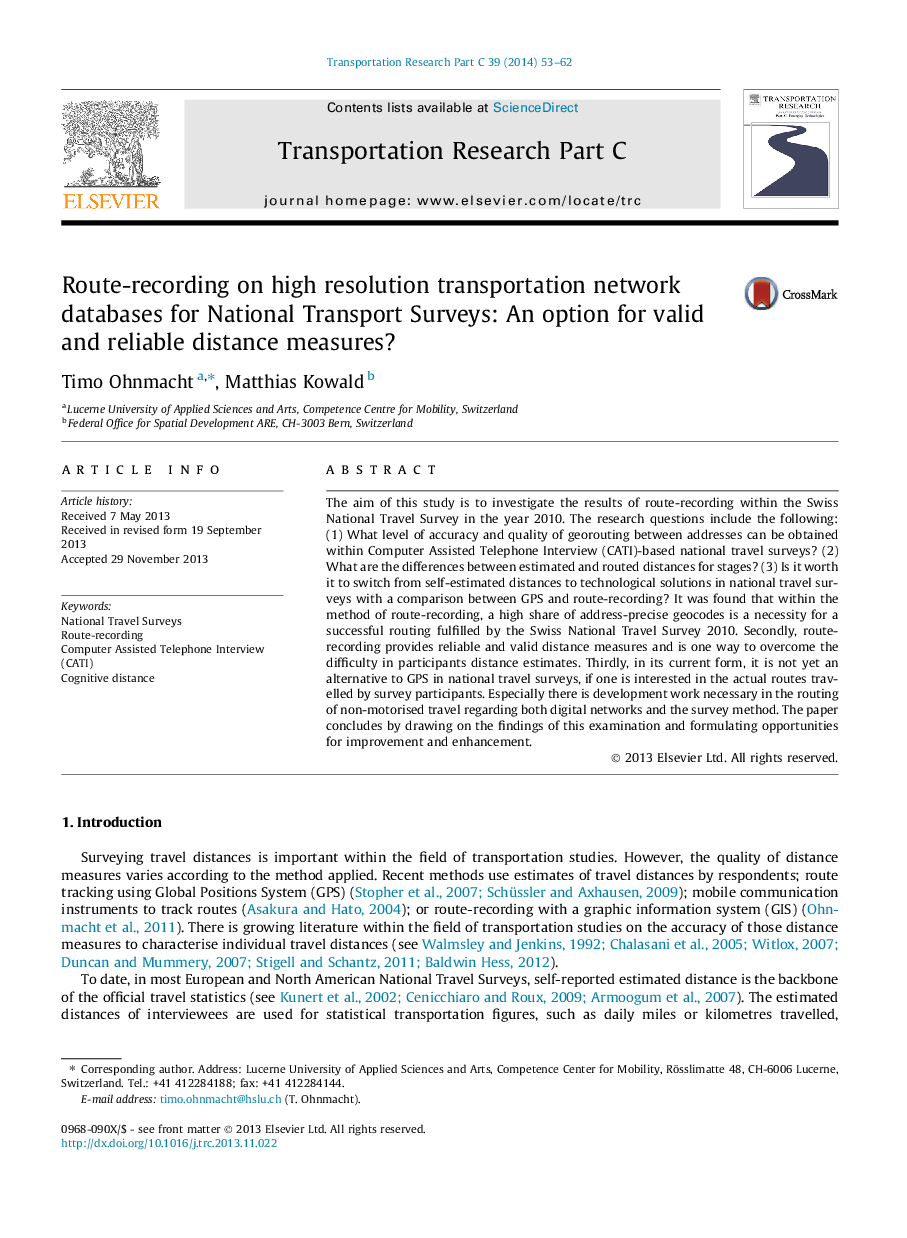| Article ID | Journal | Published Year | Pages | File Type |
|---|---|---|---|---|
| 524902 | Transportation Research Part C: Emerging Technologies | 2014 | 10 Pages |
•A high share of address-precise geocodes is a necessity for a successful routing.•Real-time route-recording provides reliable and valid distance measures.•It is one way to overcome the difficulty in participants distance estimates.•It is not yet an alternative to GPS, if one is interested in actual routes.•There is development work necessary in the routing of non-motorised travel.
The aim of this study is to investigate the results of route-recording within the Swiss National Travel Survey in the year 2010. The research questions include the following: (1) What level of accuracy and quality of georouting between addresses can be obtained within Computer Assisted Telephone Interview (CATI)-based national travel surveys? (2) What are the differences between estimated and routed distances for stages? (3) Is it worth it to switch from self-estimated distances to technological solutions in national travel surveys with a comparison between GPS and route-recording? It was found that within the method of route-recording, a high share of address-precise geocodes is a necessity for a successful routing fulfilled by the Swiss National Travel Survey 2010. Secondly, route-recording provides reliable and valid distance measures and is one way to overcome the difficulty in participants distance estimates. Thirdly, in its current form, it is not yet an alternative to GPS in national travel surveys, if one is interested in the actual routes travelled by survey participants. Especially there is development work necessary in the routing of non-motorised travel regarding both digital networks and the survey method. The paper concludes by drawing on the findings of this examination and formulating opportunities for improvement and enhancement.
